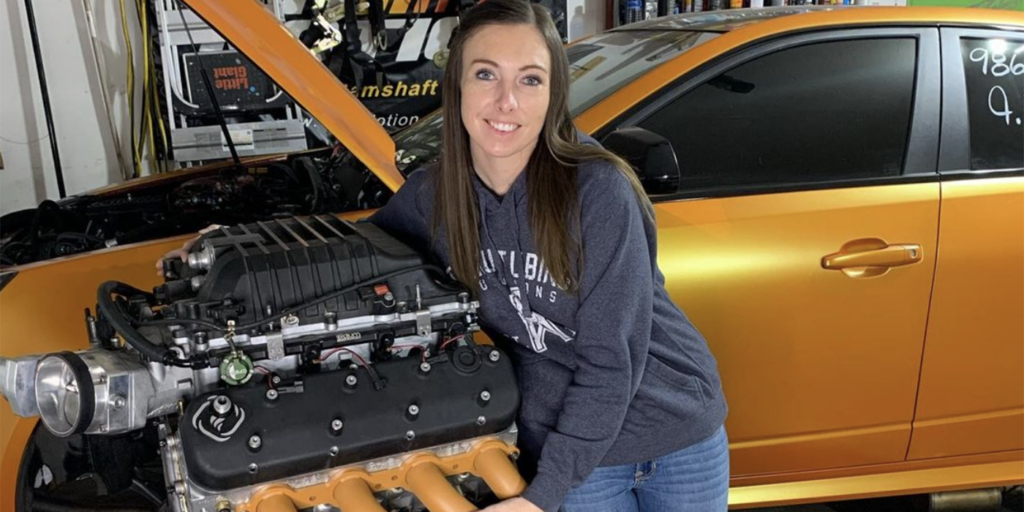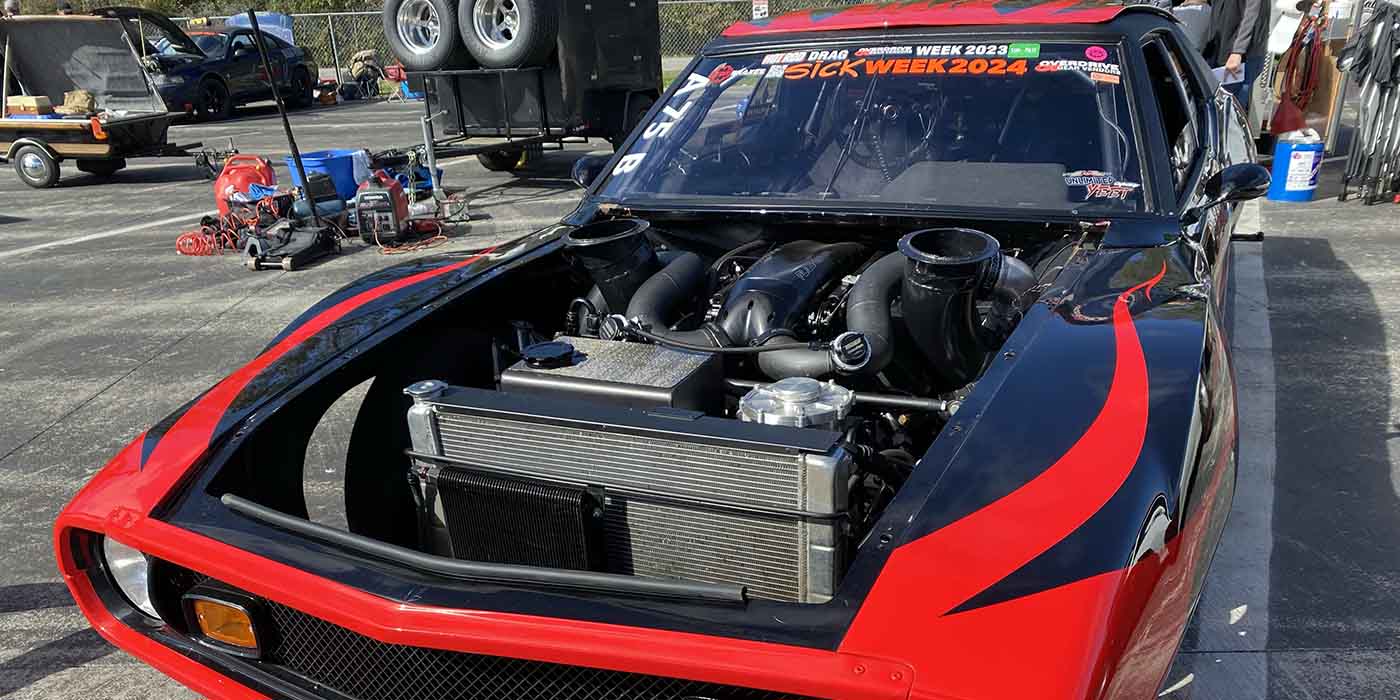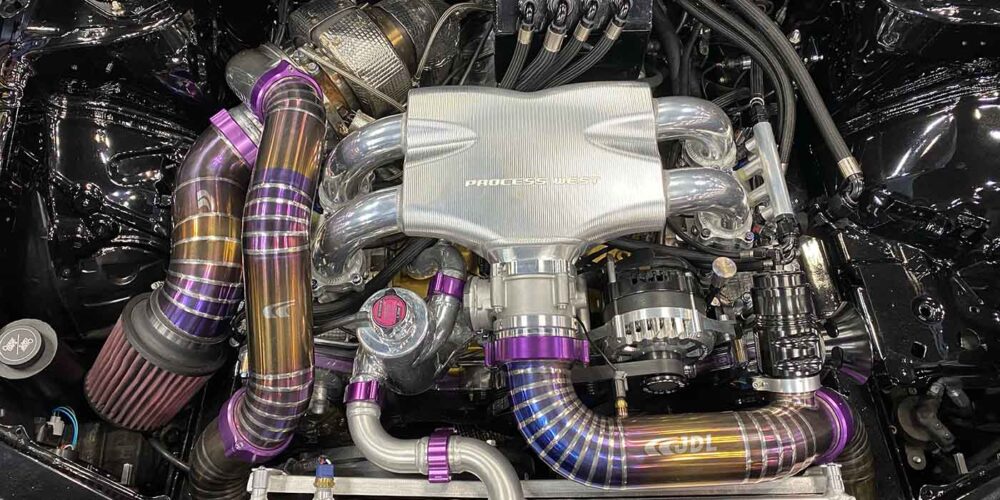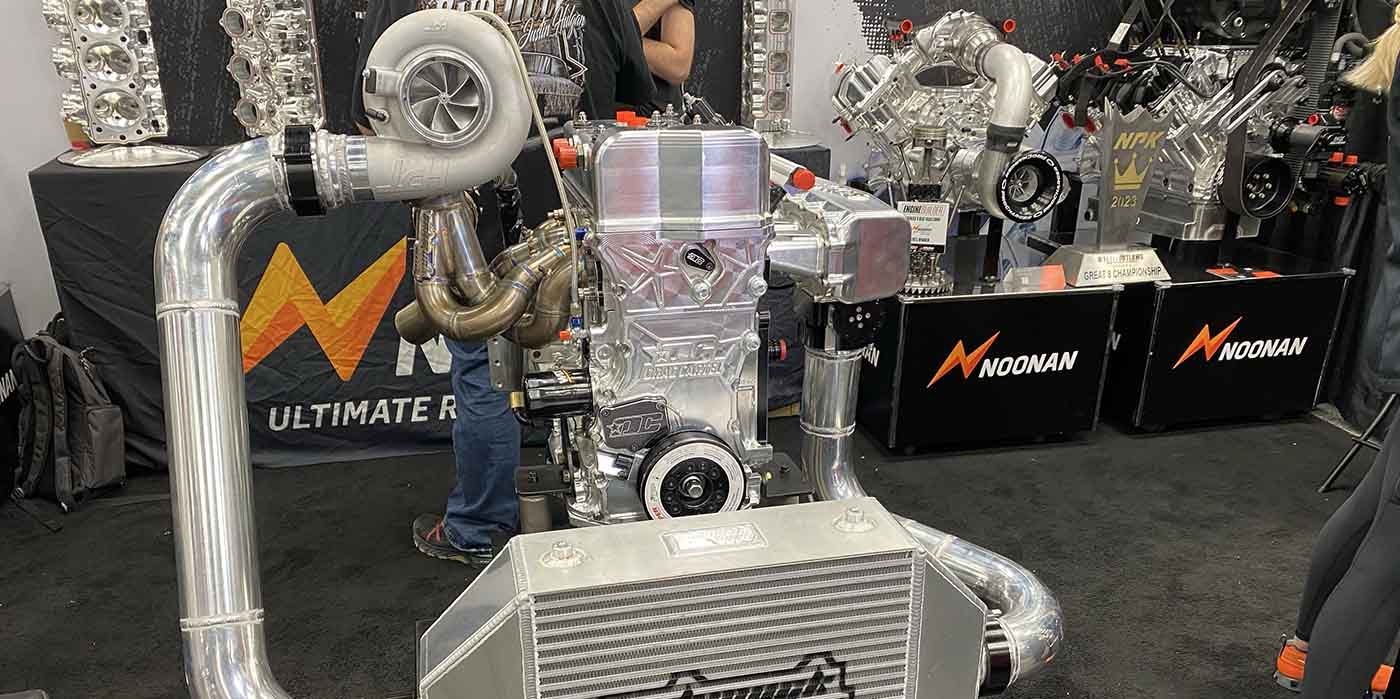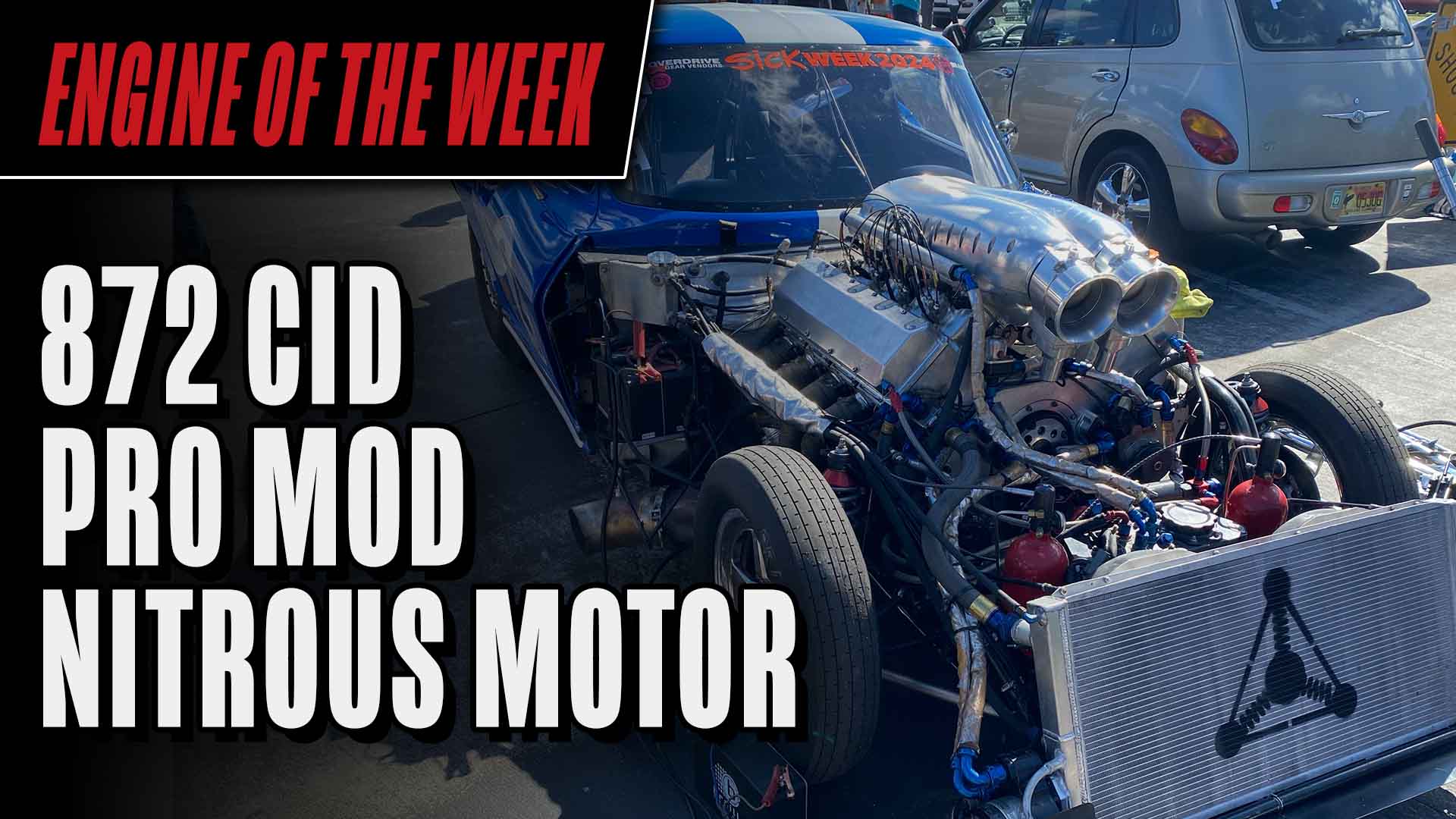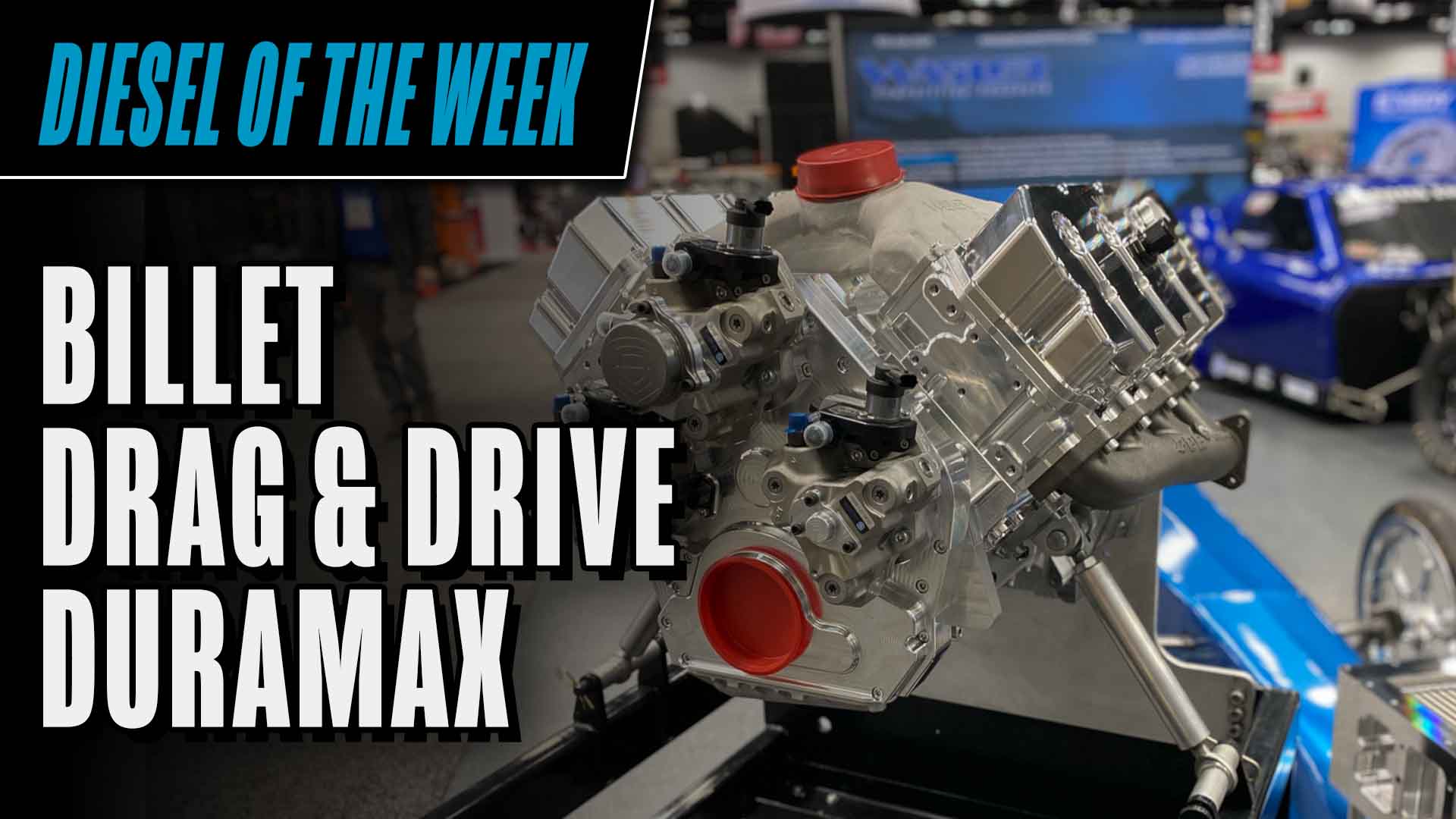Engine of the Week is presented by



We love when people want to tell us about their car/engine projects, because each one is unique to that person and each one tells a story – and each one is usually pretty freaking awesome! Felicia Smith and her 2009 Cadillac CTS-V is a perfect example. Felicia began tagging us in some of her posts on Instagram roughly a year ago, and we finally got the chance to speak with her about her CTS-V and its supercharged 427 cubic inch engine during Sick Week 2022.
Felicia Smith hails from Oklahoma City, OK, where she and her husband Aaron each work full-time jobs, but they wrench and race pretty much every hour they’re not working. Felicia’s love for motorsports began in the import world. Her first car was a 1994 Honda Civic, which only made her lust after faster options. In 2014, she upgraded to a manual Infiniti G35, which she began bracket racing with and consistently made 13-second passes.
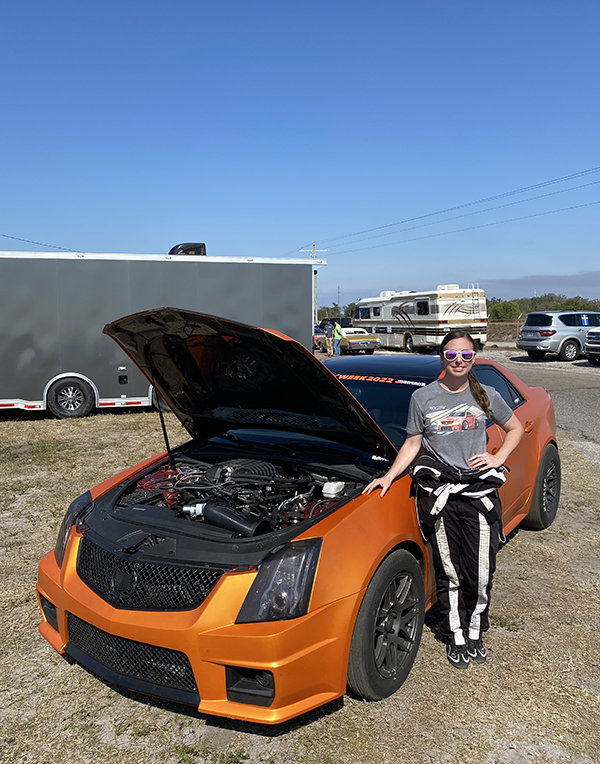
After two years of cutting her teeth in the G35, Felicia was ready for that next level of speed, but she wasn’t ready to lose any creature comforts such as AC, power steering, comfy seats, and cruise control.
Her husband Aaron convinced her to leave the import world for American muscle and the roar of a V8. Aaron’s nudge may have helped, but Felicia likely didn’t need much convincing after hearing her fair share of V8 exhaust notes. In 2016, she found herself looking at a red 2009 Cadillac CTS-V and it was instant love.
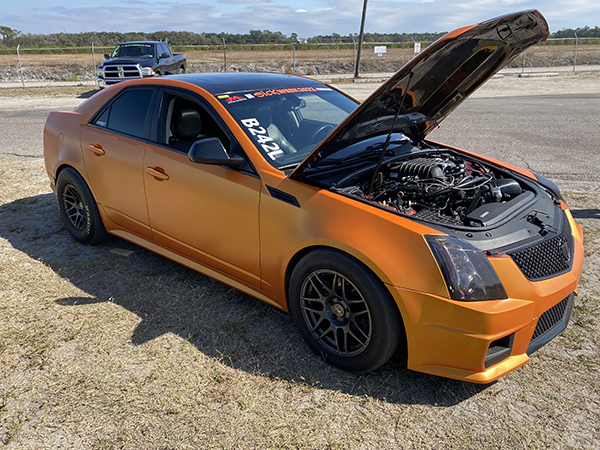
The owner of the car had kept the CTS-V fairly stock with just a few mods, giving it more than 600 horsepower under the hood! Almost immediately, Felicia and Aaron were at the track racing the Cadillac and seeing a big improvement on 1/4-mile ETs. She nicknamed the Caddy ‘Rocket’ and uses 4DRRCKT as her social media handle. Ever since that first pass in this car, Felicia has been making and exceeding goals.
“It was my daily driver,” Smith says. “It made about 618 hp to the rear wheels at that time. It wasn’t completely stock, but for me it was exactly what I needed to try to get into racing, but take it a little bit slower. I didn’t want to go from my 13-second bracket car straight into a 1,000 wheel horsepower car. This was kind of my middle meeting point.
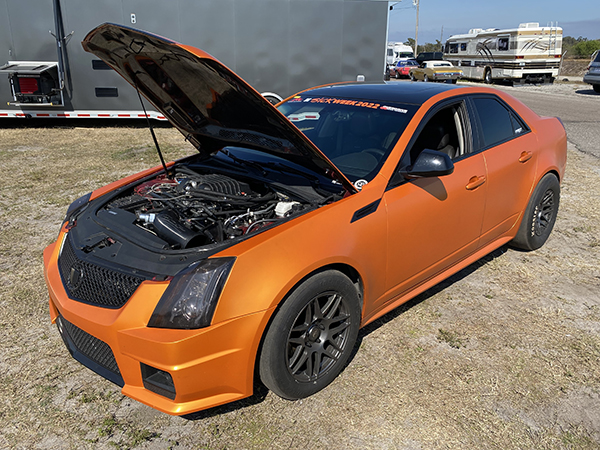
“From there, my goal was to run a 10, and we ran 10s within the first month I owned the car. Then, I just kept getting more goals and more goals and they progressed so fast that before I even met one goal, I had almost already planned the next goal. My goal after 10s was I wanted to do a wheelie. I know that does not mean the car is fast, but that’s what I wanted to do. We did that and then we ran 9s and then we ran 8s and it’s all a moving target and I’m not sure I’ll ever be done.”
That mentality is what it’s all about. As Felicia’s goals changed, so too did the CTS-V and its engine. From the factory, the CTS-V came with a 6.2L supercharged LSA engine. After Felicia wasn’t improving on her ETs any further, they knew the engine needed some love.
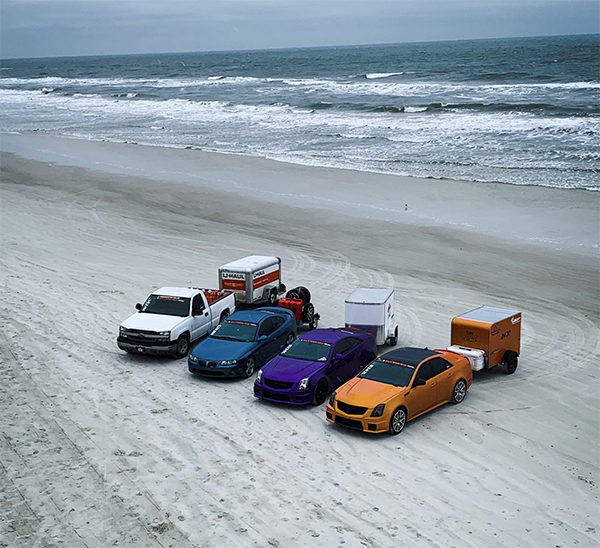
Felicia went with Frankenstein F310 cylinder heads, custom pistons, a custom Cam Motion camshaft, a larger throttle body, they ported the stock LSA blower, and started utilizing e85 fuel. Those changes took her from high 10-second passes to the mid-9s.
Of course, that only temporarily pleased Felicia. Wanting to achieve 8-second passes meant a few more changes to the engine beginning in 2020. This time, Felicia got Thompson Motorsports involved with a 427 Dart SHP iron block, new forged rods, DSS pistons, a new custom Cam Motion camshaft, Johnson lifters for the Frankenstein heads, a larger 102mm throttle body, Radium Engineering fuel rails, and the 1.9L LSA supercharger was ported by Rick Crawford.
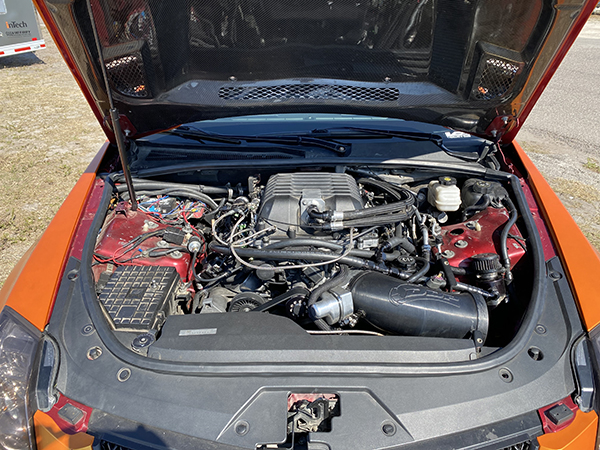
In addition, the 427 got equipped with a Nitrous Express kit, a Data Driven Performance intake, an alky-meth kit, Fuel Injector Development 1700 injectors, and DeatschWerks DW300 fuel pumps with a 400 LPH auxiliary pump.
“Having the Dart SHP iron block means that I can still run all of the amenities that came with car,” she says. “It’s really cool to run 8 seconds, but yet you still have AC, power steering, so on and so forth. The stock 1.9L LSA blower, which was ported by Rick Crawford, is pulleyed upper and lower by a 2.38 and a 10.0.
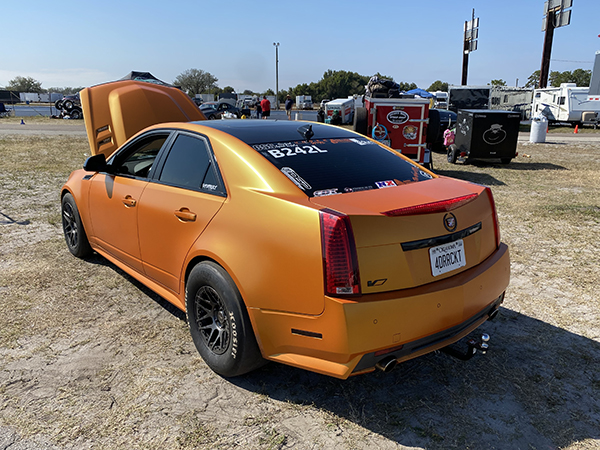
“A lot of people think that the 427 being such a large bottom end and the 1.9L being such a small blower, that it’s not going to be a good combo, but with the Rick Crawford port and that upper and lower we still make about 18 lbs. of boost – a little bit more on nitrous when we spray – and it absolutely loves it.
“We also have a Circle D converter and Circle D transmission that we built with their parts in the garage. It’s got a one-piece driveshaft and coilovers on the front. The rear end, axles and rear suspension is actually all stock. The 60-foots that you see and the wheelies that you see is all stock Cadillac performance, which is insane. It’s a fun car.”
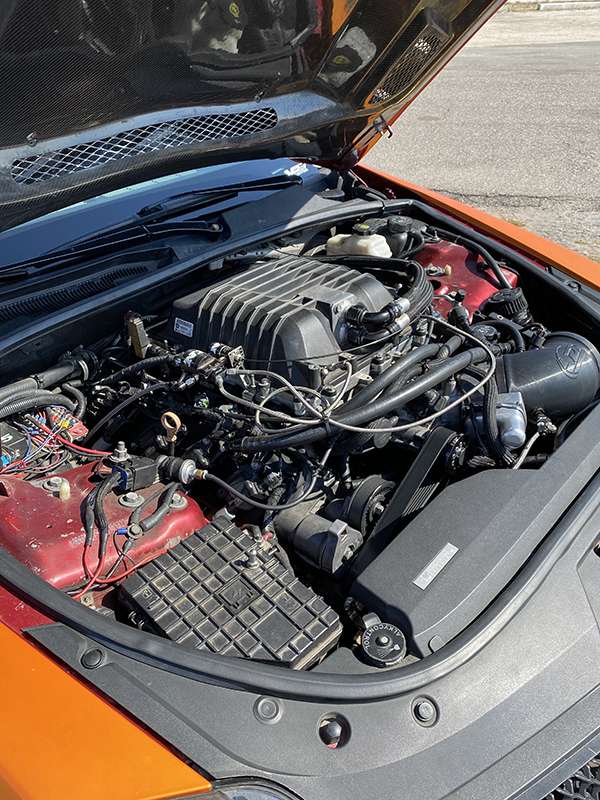
Fun is one way to put it, but Felicia’s CTS-V is now just one of five in the world to go 8-seconds in the 1/4-mile on the stock LSA blower only. Her Cadillac race car has been six years in the making and her plan is to push it even further.
“We kind of went out on a limb with this combo and it hit 1,205 hp on the dyno on spray,” she says. “With the blower only, it makes about 1,000 hp.”
One thing Felicia says won’t change any time soon is the awesome orange paint job, which wasn’t something she initially thought she’d like.
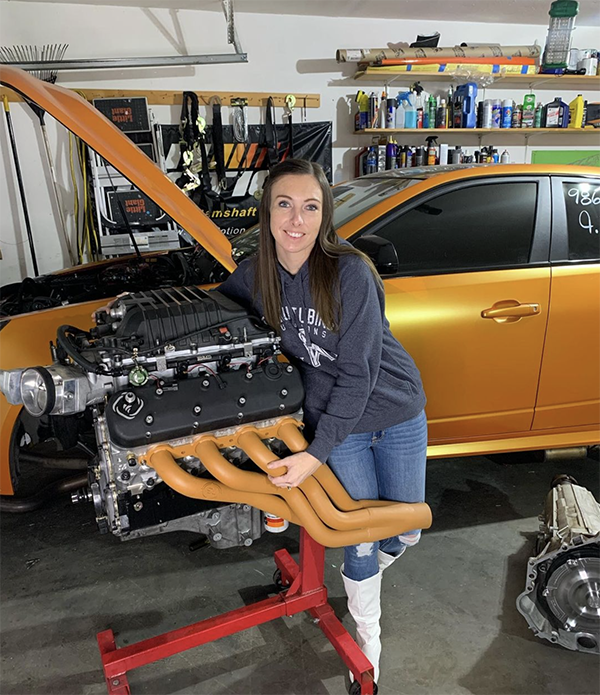
“You know when you meet somebody and you just don’t know about them, and then their personality kind of warms you up and you realize you really like that person,” Smith says. “That’s kind of how me and orange got together. I didn’t care for orange. It wasn’t my favorite color, but I wanted something different because we were doing something different and we were putting so much hard work into it. I felt like red was so common and it wouldn’t get noticed, so we went orange and I just fell in love with it. I wear orange shoes, my fingernails are orange. I’m super obsessed with it.”
Above all else, Felicia is obsessed with progressing the car and her speed. “I just try to keep her a rocket,” she says. Unfortunately, Sick Week didn’t pan out how Felicia had hoped. She wasn’t allowed to make maximum effort passes due to not having the appropriate cage. She had to change classes while in Florida, but that didn’t stop her from having a blast at Sick Week anyway.
Make sure to follow Felicia on Instagram, TikTok, Facebook and YouTube at @4drrckt.
Engine of the Week is sponsored by PennGrade Motor Oil, Elring – Das Original, Scat Crankshafts and Engine & Performance Warehouse Inc./NPW Companies. If you have an engine you’d like to highlight in this series, please email Engine Builder Editor Greg Jones at [email protected].

